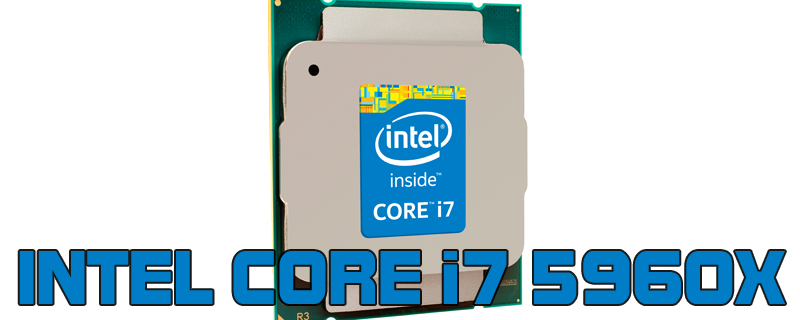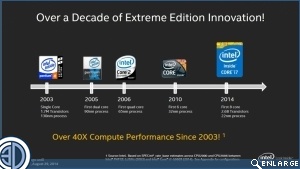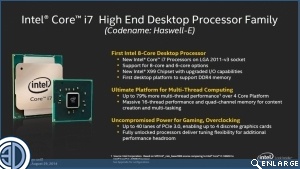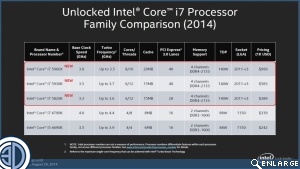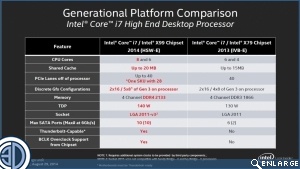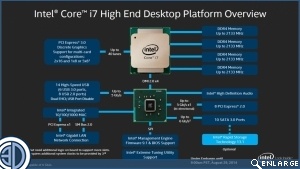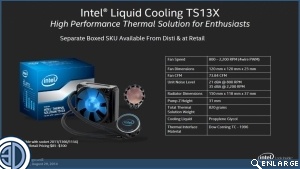Intel i7 5960X Review with ASUS X99 Deluxe
What’s New?
We never get tired of images like this. It feels like we’ve all had hyper-threaded multi-core CPUs forever, and then you realise that it’s only been 9 years of more than a single core. There also is a neat demonstration of the importance of looking at the whole architecture rather than merely the clockspeed and core numbers. Eight cores of the original Pentium 4 would still only be 16M transistors. Not the 2.6 Billion the i7-5960X is packing.
The move to 8 cores definitely has us salivating at the possibilities, but given the importance of memory bandwidth when it comes to freeing up your system we’re almost certain that the move from DDR3 to DDR4 will be the change that has the most difference to us at the real-world level.
As always there are a range of new CPUs available in the Haswell E family. We’re naturally focussing upon the top of the line model with 8 cores and 16 threads. The 20MB of total Cache will, along with the DDR4, really enable this processor to sing. The i7-5930K looks like the natural replacement for the current top of the range i7-4960X, so it will be interesting to see how much of a difference the DDR4 makes in isolation.
The advertised differences are largely the ones we’ve already explained above. It’s strange to see that the amount of PCI Express 3.0 lanes has gone from 40 to up to 40. Thanks to the extra 2 cores the TDP has gone up from 130W to 140W, but considering that the new i7-5960X has 33% extra cores on board then Intel has done well to limit the TDP increase to only 10W. The improvement in IO is also a massive one, with 10 SATA 6Gb/s ports now supported natively.
Quad channel DDR4 memory at blistering speeds? Don’t mind if we do. The DDR3 world has been one of diminishing returns in recent years, so the move across to DDR4 just has us chomping at the bit to get started. Odd to still see USB 2.0 forming part of this wholesale change into the 21st Century. We’re sure there must be a reason behind it, we just struggle to think of what that reason is, especially as USB 3.0 is backwards compatible.Â
Once again Intel are including an AIO liquid cooling solution. The days of a micro-fan on a thin slice of aluminium are a long way behind us now.Â



